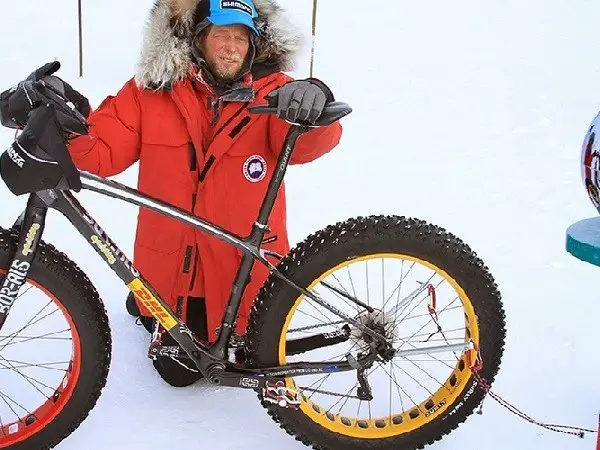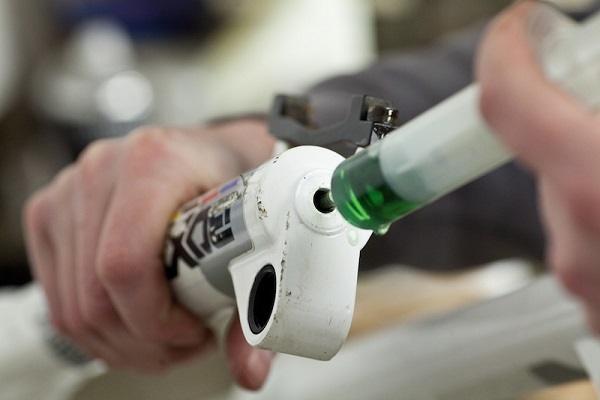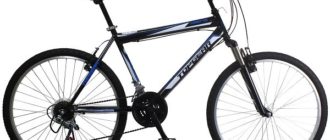Winter is about to arrive. And this means that you have to send your iron two-wheeled friend to winter – that’s what a certain number of cyclists think. Over the years, they have already learned how to solve the problem of storing a bike in winter. Someone sends the bike to the balcony or finds a place for it in a tiny apartment. But there is a certain number of riders for whom winter is a great opportunity to test their bike’s strength and endurance.
The topic of our conversation today is winter biking. We’ve brought up the question of whether or not it’s okay to ride a bike in the winter. Moreover, we took apart the positive and negative features of this activity. Now we will talk about the features of the bike itself. We will tell you what equipment effectively copes with loose snow and slush on the roads, as well as designate several bicycle brands that specialize in the production of appropriate bikes. Let’s start with the design features of bicycles for winter riding.
Frame in a winter bike
Today on the market there is a fairly large variety of models, differing not only in geometry, but also in the material of manufacture of the frame. It is clear that each of them has its own characteristics and specifics. For example, aluminum is lighter weight compared to steel, but not as malleable as innovative carbon or titanium. Let’s consider each frame material in the context of cycling in winter.
Aluminum
This is one of the most common materials used to make bicycle frames. They are resistant to corrosive influences, are lightweight and highly resistant to corrosive processes. Aluminum frames are often found in children’s, teenage and women’s bikes. Moreover, they are often made of them and sport bike models.
In terms of completing a winter bike aluminum frame is one of the most practical options. However, the owner should frequently check the frame for damage.
The right lower quill and dropouts should be the focus of attention, as these are the areas that carry the most weight.
If you want to prolong the life of the aluminum frame and reduce the load on the vulnerable places, you can use special pads made of neoprene, pre-treated chipped areas.
Another weak point in the aluminum frame is the welds, which also require increased attention from the owner of the bike. The fact is that aluminum is not highly ductile, so in these areas there may be signs of metal fatigue. And if in the warm season there will be almost no problems from this, in winter low temperatures and frozen moisture can play a cruel joke.
Steel
Another common material for making bicycle frames. It is cheap and durable, weak resistance to corrosion processes and heavyweight. Accordingly, preparing the bike for winter riding, you should carefully inspect the frame for the presence of chips and tiny “spiders.
Once again in the zone of increased attention – the dropouts of the bike. It is desirable even before the first frosts to treat potentially vulnerable places. As a lubricant will do lithol, solidol, baking grease, mauville and other mixtures.
Magnesium in alloys
If you own a bicycle with a magnesium alloy frame, over-winter your bicycle and put it in a proper place for overwintering. This material is not suitable for use at low temperatures.
The mixture of snow, dirt and chemicals is disastrous for bicycle frames made from magnesium alloys. The latter reacts and breaks down.
Most often these bikes are designed to participate in sports competitions. They cost a lot, so it will be a shame to bruise this technique for one winter.
Titanium
Attention! We are talking about the ideal frame material for winter cycling. Titanium has an effective resistance to both mechanical and chemical effects. It also copes well with extremely low ambient temperatures.
That’s interesting! Titanium looks impressive and noble in its original appearance. You don’t even have to paint the bike frame or treat it with special compounds. The material can withstand all kinds of loads and adverse factors.
However, there are also negative qualities, which can be a fly in the ointment in this barrel of honey. Titanium does not belong to the category of budget materials. Besides, to weld a really good frame with the right geometry is possible only in a professional workshop with the proper equipment.
A titanium frame with poorly executed welds in the conditions of the harsh Russian winter can turn into a roulette wheel – the moment of its destruction can be unpredictable both in terms of time and in terms of the strength of degradation.
Carbon
Carbon fiber is resistant to chemical reagents and low temperatures. Carbon also withstands serious mechanical stress reasonably well. But extreme frosts make it vulnerable and brittle. In addition, a carbon bike frame is not such a cheap treat. Most often this frame is used to assemble bikes for athletes and keen cyclists who spend most of their lives on two wheels.
Shock-absorbing fork
Let’s say at once: whatever the design of the fork, its properties will change under the influence of negative temperatures in any case. The quality of the equipment and brand does not play a significant role here – you just have to accept this negative fact:
- the spring-elastomeric will become stiffer;
- spring-oil suspension fork will work slower due to the solidification of oil.
Using oil of a thinner consistency and adjusting the rebound to the air temperature will help a little to remedy the situation. On an air fork you can increase the pressure a bit until the fork sag is back to normal – this should be done outside when the mechanics of the bike are used to the environment.
Brakes
For dry and frosty winter it is safe to take the V-Brake. But if you have to ride on a snowy field and in wet weather, it is worth using disc brakes. They are easier to clean off dirt and snow, they have a harder grip, and their resource tends to infinity.
If you plan to ride on hydraulics, it’s worth checking the condition of the brakes: tighten the connections of nipples and nuts. If your bike has V-Brakes, pay attention to the following nuances:
- Limited service life. In winter it is reduced to 200 km, so you should regularly monitor their condition.
- Snow becomes ice when it adheres to the rims, so periodically you need to slow down.
- It is necessary to protect the hubs from moisture and dirt.
- Check the condition of the bearings and dusters.
In fact, a bicycle always needs the attention of its owner, regardless of the temperature outside. But winter is a time when the conditions of use of two-wheeled transport become more extreme. Therefore, the life of its parts and mechanisms depends on how often you will check the condition of your bike.
Tires, pedals, and drivetrain
As you understand, riding on slicks in winter is not a good idea. Tires should be studded, with an aggressive tread pattern, in order to confidently plow through loose snow and cope with icy roads. A bicycle with studded tires becomes more controllable and stable on specific road surfaces.
As for pedals, their choice depends on the rider’s preferences. Someone quietly rides with ordinary, someone puts wider, someone gives preference to contact pedals. Here it is impossible to give any serious recommendations. Take into account only that while riding in winter, they can be clogged with snow, mixed with mud and reagents, which is not very good for their further use.
The transmission of the bike is one of the most significant parts of the design. Needless to say, in winter the load on the drive increases many times? Chains, sprockets, derailleurs – almost all elements of the transmission wear out much faster at subzero temperatures and in conditions of high humidity. As a variant – for the time of winter rides to put more budgetary equipment which is not sorry and to throw out after some months of use.
This is important! No matter how good quality bike chain is, without proper care it will not last 200 km. In winter it should be cleaned much more often from snow and dirt, lubricate with thicker compound and thoroughly dry after every ride.
For perfect work of brakes the cables and jackets are responsible. Their timely replacement will allow trouble-free rolling all season.
What is the best winter bike
Based on all of the above, it is possible to sketch a rough portrait of the “ideal bike” for winter riding in the city and off-road:
- The bike should be heavy. In this case it is easier to control on slippery pavement and mush from loose snow.
- The steel frame, although heavy, is much more resistant to sub-zero temperatures and aggression.
- The wheels should have studded tires with aggressive tread pattern.
- As for brakes, it is worth to give preference to a disk mechanics.
- In winter it is better to refuse plastic derailleurs – in winter the material becomes very fragile.
And now let’s talk about options that will help prepare the bike to ride in freezing temperatures.
K-track .
In fact, this is a specific set of equipment, which turns an ordinary bike into a dynamic transport for winter riding. To install this kit, you need to remove both wheels and put:
- in place of the front one, a wide ski;
- in place of the rear – the track.
Such kits are designed for bicycles with wheels from 20 to 26 inches. K-track is a great option for bikes with eccentrics. Another advantage of using such equipment is the unchanged weight of the bike. The skis combined with the track provide a high Cross-country—what-it-is–nuances bike in all conditions. In fact, the output is something like a compact all-terrain vehicle.
Fatbike
Here we are talking about a separate category of bicycles. They can be used throughout the year. Fatbikes feature wider wheels, no rear suspension, and a rigid fork.
Fatbikes can easily handle loose snow and sand, slippery surfaces, icy surfaces and mud. In fact, it is something like an ATV in the world of bicycles.
Ice Bicycle
This bike was created by a group of engineers from the United States. Negative temperatures do not affect the quality of work of nodes and mechanisms. The bike is excellent in the harsh conditions of the Russian winter and demonstrates high Cross-country—what-it-is–nuances ability.
However, to ride such a bike is not very easy – you have to make a lot of effort to turn the pedals. Therefore, for a confident ride on this bike will need serious endurance and a certain physical preparation.
Tips for choosing a winter bike
To enjoy the winter scenery and not to deny yourself the pleasure, you do not need to buy a special winter bike. It’s enough to prepare your bike well for use in unusual conditions. This applies to the serviceability of all parts and mechanisms, the state of metal and plastic parts.
In winter, it is worth to give up the bike computer and the use of plastic parts. Also do not forget that your closet in winter should not only be warm, but also comfortable for riding in the snow. Therefore, always remember about the cyclist’s outfit.
Conclusion
Riding a bicycle in the winter is still an adventure. While some people struggle to get through the snowdrifts, and others dance tambourine dances around their car, cyclists calmly and measuredly go about their business, enjoying the frosty air and the surrounding beauty. If you prepare your bike competently for use in freezing temperatures, you can ride through the winter and keep your bike in good working order without significant losses.









For winter I think the best option cruiser with a planetary (which I myself use for many years): wide enough wheels, shifted back center of gravity for handling, closed to all mechanisms, minimal (and affordable) maintenance.